Environment
Explore the Environment category to uncover deep ecological insights, analyze human impacts, and engage with innovative strategies to safeguard Earth's ecosystems.
405 articles

New
New
Relationships between individuals of the same species can be positive or negative. Competition is a negative interaction in which at least one of the competitors is harmed. When individuals of the same species compete for food, territory, reproduction or social dominance, population growth can be affected....
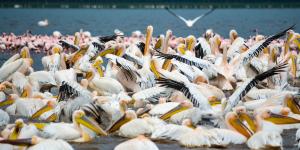
New
New
In a biological community, living beings establish various relationships. These include with many biotic and abiotic factors, such as other animal species or even the habitat itself. One of the most important biological relationship is with other members of their own species. This includes those with...

New
New
A ravine is an abrupt geographical feature generated on the surface of the ground that is charactertized by relatively steep sides and a narrow space between them. The formation of ravines has various causes, but water erosion is one of the most common. Tetonic activity can also influence ravine formation....
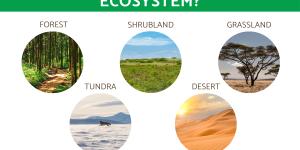
New
New
Have you ever wondered why some places on Earth are covered in dense forests while others are barren deserts? Or why certain animals and plants can only be found in specific locations? The answer lies in the fascinating world of terrestrial ecosystem. Terrestrial ecosystems are all around us, from the trees...

New
New
Although very different, plants are living beings which have some basic functions which are the same as animals. They need to take carry out cellular respiration and reproduce to maintain their species, as well as many other biological processes. Energy is particularly important because they would not...

New
New
While heavy water is a type of water and shares the same chemical elements, the configuration of these elements gives it distinct properties to regular water. It derives its common name from the fact that the normal hydrogen atoms are replaced by the much heavier isotope of hydrogen known as deuterium....

New
New
You may be aware that nectar is a substance which attracts various pollinators to flowers such as bees. You may not be aware why plants have nectar in the first place. While nectar is most associated with flowering plants, it can be found in some non-flowering plants. Angiosperms evolved from gymnosperms...
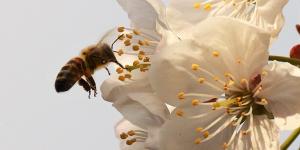
New
New
There is an enormous variety of plant species on our planet. They have evolved to adapt to various environments and ecosystems, some inhabiting the most inhospitable environments we can imagine. These adaptations affect various aspects of their life cycle, but some of the most vital affect reproduction....

New
New
Our world's ecosystems face many threats, with many scientists claiming that biodiversity loss is so great we are currently experiencing a mass extinction event. This is when the loss of biodiversity occurs at a very high rate and to a widespread degree. There are many causes of such biodiversity loss,...

Artificial intelligence has revolutionized multiple industrial sectors, with further innovation appearing at a staggering rate. The generation of capital, opportunities and solutions to various problems are exciting. They have the potential to benefit societies in many ways, especially in areas such as...
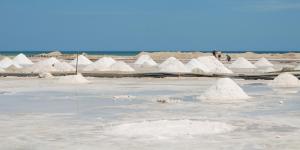
Also known as salt deserts or salt flats, salt pans are vast expanses of land which are covered by a layer of minerals, mostly in the form of sodium chloride salt. They are considered extreme environments since this concentrated amount of salt makes it very difficult for organisms to survive. Salt flats...
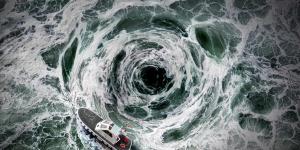
Water whirlpools are fascinating natural phenomena that occur in oceans, rivers, and lakes. But what exactly causes these swirling vortexes to form? Whether it's ocean currents, tidal forces, or human-made structures, whirlpools result from the movement of water in unique ways.
In this article by thedailyECO,...
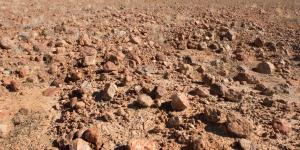
Desert pavements are arid topographical regions which are characterized by a surface covered in rocks, pebbles or gravel with little or no sand. While we might most associated deserts with sand, desert pavements represent a very large portion of this planet's desert areas. Of great importance to their respective...

Limestone pavements are geological formations found in limestone terrain that create an exposed flat topography which has features caused by weathering of the rock. This weathering leads to grooves, cracks and cavities which create blocks known as clints which are separated by fissures known as grikes....

Planet Earth is more than 4.5 billion years old. Life on Earth evolved from initial molecules which eventually became the living organisms we know today which can vary greatly in complexity. While various unknown events helped to form life, others worked to curtail it or at least change its course. Included...

A plasmid is a circular genetic molecule containing DNA that is found within certain cells. It is most commonly found in bacteria, although it has been found in eukaryotic organisms such as certain types of yeast. The main function of plasmids is to act as a vehicle for introducing foreign DNA or genes...

Adaptive radiation is a process in evolution where one original species quickly splits into many new ones, each finding its own way to live in different environments. This usually happens when creatures find themselves in new places with less competition, like on isolated islands or after a big die-off...
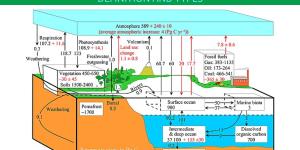
Considered cycles of matter, biogeochemical cycles are the natural routes of transformation by which essential elements and compounds move between living organisms, the atmosphere, the Earth's crust and water. These cycles are continuous and are necessary for the regulation of the nutrients essential for life...

Artisanal mining, often practiced in small-scale, informal settings, plays a crucial role in the livelihoods of millions worldwide. However, its environmental impact is profound and far-reaching, affecting ecosystems, water sources, and local communities. From deforestation and soil degradation to toxic...
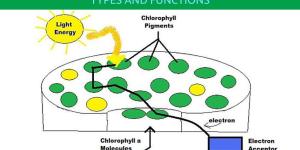
Photosynthesis is a necessary process for most life on Earth, including ourselves. Without it, ecosystems would collapse and only certain prokaryotic organisms which do not rely on it would be able to continue. Photosynthetic organisms include most plants, as well as certain types of algae and bacteria. Although...

Asbestos is a naturally occurring mineral once widely used in construction and manufacturing due to its heat resistance and durability. However, asbestos exposure can have serious health consequences, leading to diseases like mesothelioma, lung cancer, and asbestosis. While its use has been heavily regulated...

Sinkholes are openings in the ground which are caused by the gradual or immediate collapse of the surface. While this can be a general sinkhole definition, there are many different types which can be found both in nature and in urban environments. Some sinkholes are caused by natural processes, but an increasing...
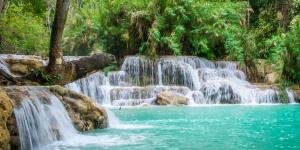
Water springs are one of nature’s most insteresting freshwater sources, emerging naturally from the ground due to underground water pressure. But how exactly do they form, and why are they so important? From supplying drinking water to supporting ecosystems, natural springs play a crucial role in sustaining...

Rare earth metals are a group of 17 chemical elements on the periodic table. They have certain magnetic, electrical and optical properties that make them essential in various industries. Used in the manufacture of electronic devices, renewable energy, military equipment and industrial processes, they are...

Lysosomes are essential organelles that act as the cell’s recycling center, breaking down waste, cellular debris, and foreign invaders. These small, enzyme-filled structures play a crucial role in maintaining cell health by digesting macromolecules and recycling nutrients. Found mainly in animal cells,...

Thylakoids are membranous structures which are contained within chloroplasts and cyanobacteria. They trap light energy and transduce it into the chemical energy forms known as ATP and NADPH. Thylakoids are structures where a lumen space is surrounded by a membrane. They are mainly composed of photosystems...
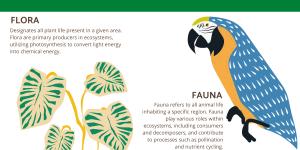
The terms "flora" and "fauna" represent the living organisms that inhabit our planet. These classifications help scientists and nature enthusiasts alike understand the diversity of life across Earth's many ecosystems. Simply put, flora refers to all plant life while fauna encompasses all animal life. This...

Erosion is a geological process which creates various landforms both above and below the Earth's surface. The mechanical action of various forces causes material to wear away, with different forces affecting this material in different ways. The material which is subsequently produced is them deposited somewhere...

Water condensation is everywhere around us, from the glistening dew drops on grass to the fluffy clouds drifting by. It's the simple yet profound process where water vapor transforms back into liquid water. This fundamental change shapes our weather, drives the global water cycle, and influences our everyday...

A wadi is a dry channel in that only transports water intermittently, usually after intense rainfall in arid and semi-arid regions. Essentially, it is a dry river bed because it was created by water which once passed through the channel. These channels are characteristic of deserts and other similar areas...

The connection between cattle and climate change is a complex and highly debated environmental issue. While cows have been a part of Earth's ecosystems for ages, the rapid expansion of industrial livestock farming has turned them into major contributors to global greenhouse gas emissions. However, the...
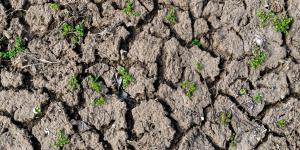
Beneath our feet lies one of Earth's most precious yet often overlooked resources: soil. This thin layer of earth sustains life as we know it, supporting everything from the food we grow to the diverse ecosystems that maintain our planet's health. However, this vital resource faces increasing threats from...

Volcanic islands start underwater, where Earth's internal forces push magma up through the seafloor. Out of the millions of volcanoes on the ocean bottom, few grow tall enough to break through the water's surface. These islands take different paths to formation, some pop up where tectonic plates meet...

An oasis is a fertile area with water that is located in the middle of a desert or a similarly arid region. Its formation is dependent on underground water sources, rivers, fossil waters or human intervention through wells and irrigation systems. Oases have been fundamental for the survival of communities in...
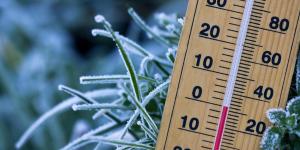
Thermal comfort refers to how we feel mentally about the ambient temperature of our environment, meaning how we body perceive it in our body. While individuals will have different perceptions for both physical and psychological reasons, external factors such as wind, humidity and solar radiation have...

Lepidopterans are arthropod insects of the order Lepidoptera. They are characterized by two pairs of scaly wings, six legs, two antennae, a three-part segmented body and a modifies proboscis mouthpart. These combined characteristics apply to the insect species we know as butterflies and moths. Lepidopterans...
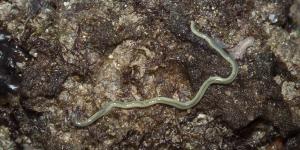
Making up the phylum Nemertea, nemerteans are commonly known as ribbon worms. They are unsegmented, aquatic worms that are ribbon-like in shape and inhabit shallow waters. Also known as proboscis worms, their common names refer to the presence of a long, muscular tube that can extend rapidly known as a...

Just like our bodies have different parts working together, plant roots are surprisingly complex structures. We often think of them as just anchors, but they're actually sophisticated systems with specialized tissues and regions, each essential for the plant's survival. Understanding their anatomy helps...
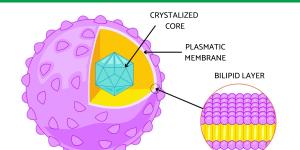
Peroxisomes are irregularly shaped cell organelles that are involved in metabolic processes and other functions within the cell. Their name originally derives from their ability to produce hydrogen peroxide as a result of lipid metabolism. Found in eukaryotes, their structure contains a lipid bilayer...
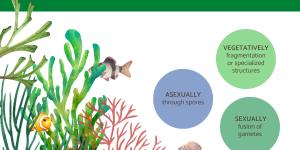
Algae are a diverse group of photosynthetic organisms that play a vital role in aquatic and terrestrial ecosystems. Their global success is due in part to their impressive adaptability, which extends to their diverse reproductive strategies. From simple fragmentation to complex sexual cycles, algae...

Ethology is a branch of zoology that studies the specifics of animal behavior. By studying animal behaviors, we are able to see not only how animals interact with their environment, but how these behaviors have evolved and adapted over time. This is not only a fascinating insight into animal life, but...

Sometimes known as the beast from the east, the Siberian high or Siberian anticyclone is a weather system characterized by very cold air that collects in northeast Eurasia. Formed by high-pressure systems, the Siberian high provides very cold winters which move from their point of origin across various...

Fermentation is a process where tiny organisms like bacteria and yeast cause chemical changes in food and other materials. It's how we get yogurt and wine, but it's used for much more than just food. Fermentation plays a role in everything from making energy to creating new medical materials. Different types...

As cities continue to grow around the world, the importance of urban green spaces is becoming increasingly clear for both the environment and our well-being. These vital areas, ranging from small neighborhood parks to expansive urban forests, offer essential benefits that help make cities livable and...

Aquifers are underground water systems that store and transport groundwater through layers of rock and sediment. These natural reservoirs have shaped human civilization since ancient times, when communities first dug wells to access water. Today, cities and farms worldwide still depend on aquifers for...

A sustainable city is one that has been adapted or designed to manage and mitigate its social, economical and environmental impact. Inhabitants of these cities should expect protection of their human rights and a high-standard quality of life. Sustainability for a city means safeguarding its future. This...
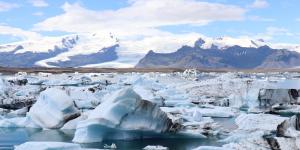
Earth's polar ice caps are massive frozen formations that shape our planet's climate and ecosystems. These vast sheets of ice, found in the Arctic and Antarctic, play crucial roles in regulating global temperature, sea levels, and ocean currents. Understanding how they form, where they exist, and how...
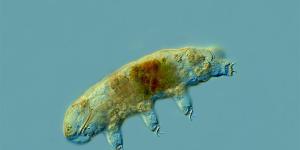
Some of the most extreme habitats in the world appear as if nothing can live in them. Whether due to high temperatures, acidity or salinity, among many other factors, life is sparse. This does not mean no life can survive in these environments. Organisms which can survive extreme conditions are known...
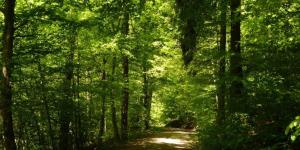
Forests are more than just collections of trees, they are complex and dynamic ecosystems characterized by intricate interactions between living organisms and their environment. These vital habitats, covering vast portions of the Earth's land surface, play a crucial role in regulating climate, supporting...

Archaea is a domain of unicellular microorganisms without a nucleus that are similar to bacteria. Such is their similarity that they were once considered a type of bacteria under the name archaebacteria. Domains are the highest taxonomic rank of all living organisms, with all living organisms falling under...
